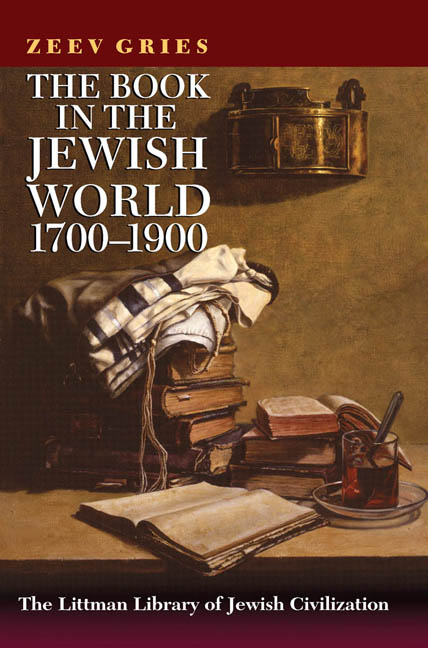Book contents
- Frontmatter
- Dedication
- Preface to the English Edition
- Contents
- List of Illustrations
- Note on Bibliographical Conventions and Transliteration
- Introduction
- PART I THE AWAKENING OF THE NASCENT INTELLIGENTSIA
- PART II THE BOOK: GUARDIAN OF THE SACRED OR HERALD OF SECULARIZATION?
- Afterword: The Revolution in the World of Hebrew Books at the Start of the Twentieth Century
- Appendix: The Young Abraham Ya'ari
- Bibliography
- Index of Books and Periodicals
- Index of Places
- Index of People
- Index of Subjects
Preface to the English Edition
- Frontmatter
- Dedication
- Preface to the English Edition
- Contents
- List of Illustrations
- Note on Bibliographical Conventions and Transliteration
- Introduction
- PART I THE AWAKENING OF THE NASCENT INTELLIGENTSIA
- PART II THE BOOK: GUARDIAN OF THE SACRED OR HERALD OF SECULARIZATION?
- Afterword: The Revolution in the World of Hebrew Books at the Start of the Twentieth Century
- Appendix: The Young Abraham Ya'ari
- Bibliography
- Index of Books and Periodicals
- Index of Places
- Index of People
- Index of Subjects
Summary
OVER THE PAST THIRUY OR SO YEARS I have written extensively on various aspects of the history of books in the Jewish world but have long felt the need for a more comprehensive account of that history. In 2002 I published a slim volume on the subject in Hebrew, entitled The Book as an Agent of Culture, 1700–1900, in an attempt to provide an introduction to the subject for the general reader. It incorporated revised versions of material previously published in a number of articles as well as new material deriving from my continuing research. The volume was published by Hakibbutz Hameuchad in its Heillal Ben-Hayyim Judaica Library at the suggestion of the founding editor of that series, Meir Ayali, who had long encouraged me in my research and writing. The present volume draws heavily on that work but is not a direct translation, though I must straight away thank Jeffrey Green of Jerusalem for diligently translating the Hebrew text as the basis for this present book.
The questions I raised in the Hebrew edition concerning the role of books in shaping and defining Jewish national identity have still not been conclusively answered; new questions have arisen in my mind, and new thoughts have taken shape. I have incorporated much of this new material in this volume, but would like to draw attention here to a matter I consider of particular relevance.
In the second, revised edition of his book Imagined Communities, Benedict Anderson noted the development of printing, especially in vernacular languages, as the key stimulus for the creation of a sense of national identities among European peoples. But the Jewish case is rather unusual; with the Jewish diaspora extending over all continents, there were several vernacular Jewish languages—for example, Judeo-German (Yiddish), Judeo-Spanish (Ladino), and Judeo-Arabic. The linguistic factor uniting the Jewish people was not their vernacular language, as Anderson would have it, but rather their ancient sacred language, Hebrew, which lay at the heart of Jewish religious life and education wherever Jews lived and throughout the centuries, till today. Thus, a discussion of the history of Hebrew books forms the core of my work here.
- Type
- Chapter
- Information
- The Book in the Jewish World, 1700–1900 , pp. vii - xiiPublisher: Liverpool University PressPrint publication year: 2007

